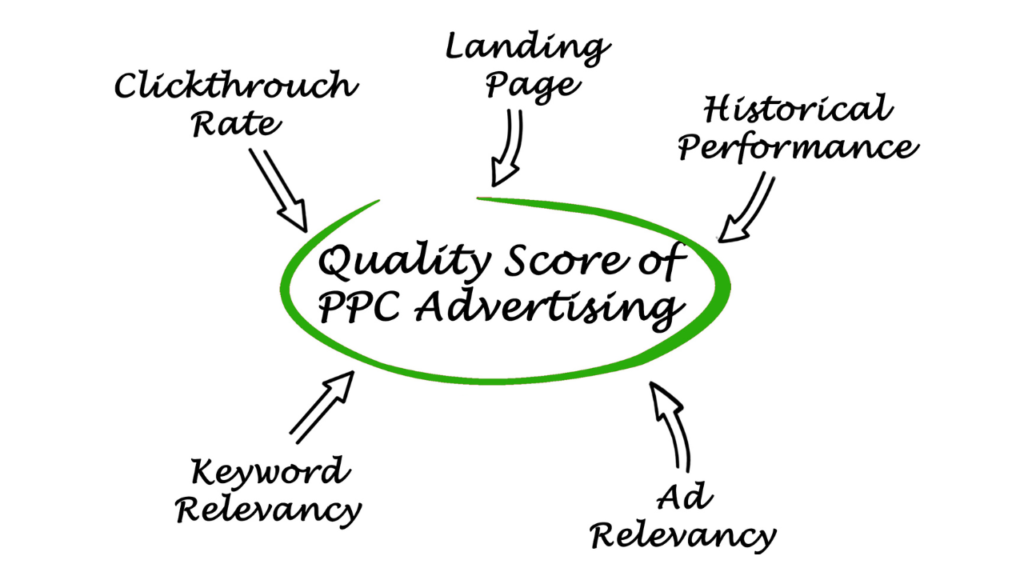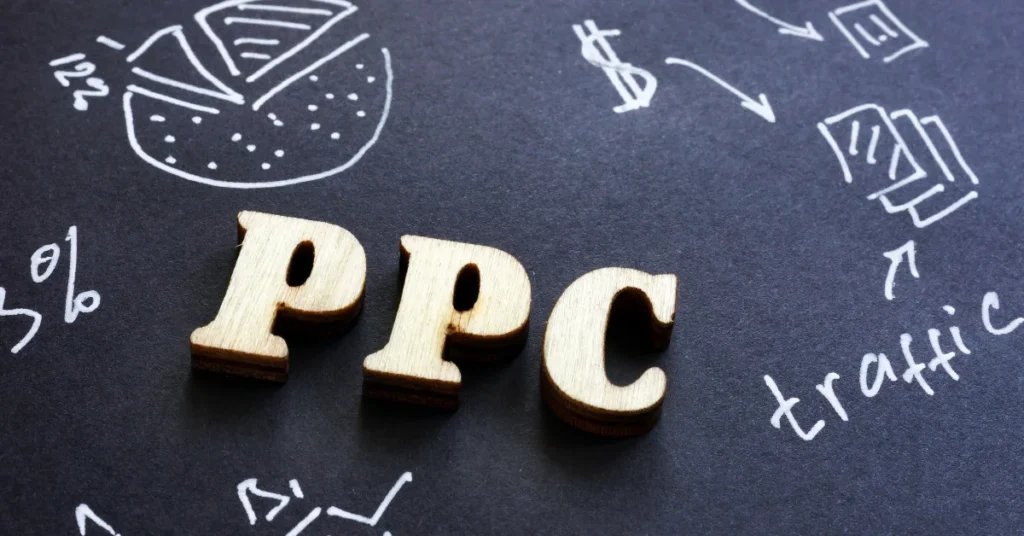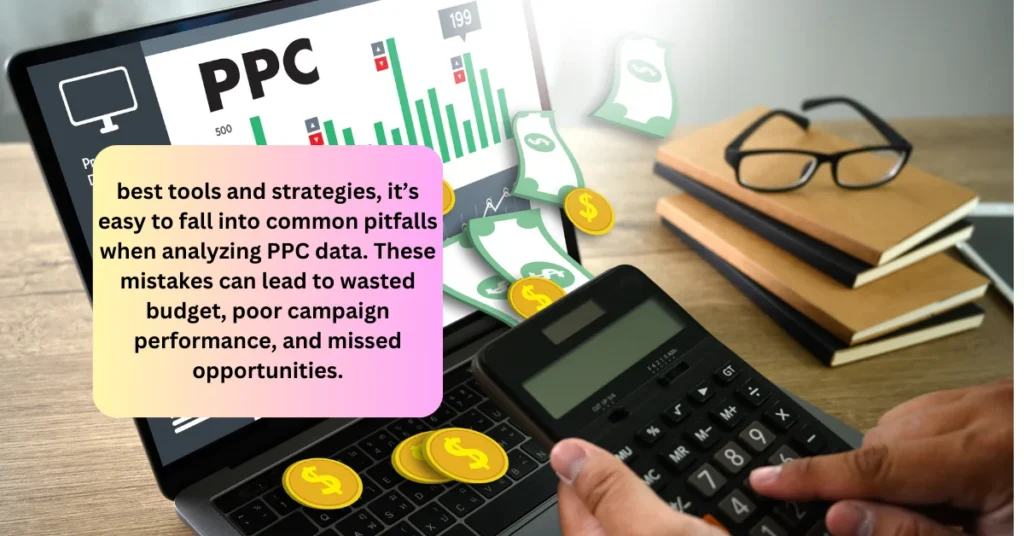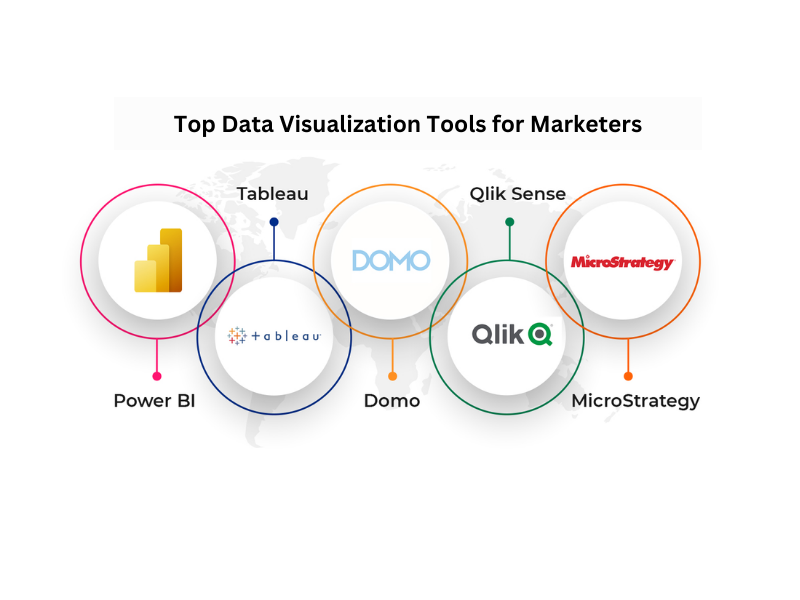Ever feel like your PPC campaigns are draining your budget but not delivering the results you want? You’re not alone. Many businesses dive into pay-per-click advertising with high hopes, only to find that their return on investment (ROI) falls short of expectations. The culprit? A lack of data-driven insights.
In today’s competitive digital landscape, simply running PPC ads isn’t enough. You need to be smart about it—analyzing every click, every conversion, and every dollar spent to ensure your campaigns are truly effective. That’s where PPC analytics comes in. By leveraging the power of data, you can turn underperforming campaigns into profit-generating machines.
This blog post will guide you through the essential metrics to Maximize Your ROI with Data-Driven Insights, the tools you need, and the common pitfalls to avoid. Ready to maximize your ROI? Let’s dive into the world of PPC analytics and discover how data-driven decisions can transform your advertising strategy.
What is PPC Analytics and Why Does It Matter?
PPC analytics is more than just a buzzword; it’s the backbone of any successful pay-per-click campaign. But what exactly does it mean? Simply put, PPC analytics involves tracking, measuring, and analyzing the performance of your PPC ads to understand how well they’re working—and more importantly, how they can be improved.
When you launch a PPC campaign, you’re essentially paying for traffic. Every click costs money, so it’s crucial to ensure those clicks lead to meaningful results, like conversions or sales. This is where PPC analytics comes in. By diving into the data, you can see which ads are performing well and which aren’t, allowing you to optimize your campaigns for better results.
But why does PPC analytics matter so much? Imagine driving a car with a blindfold on. You might have a general idea of where you’re going, but without being able to see the road, you’re likely to make costly mistakes. The same goes for PPC campaigns. Without analytics, you’re essentially blind to what’s happening in your campaigns, which can lead to wasted budget, missed opportunities, and poor ROI.
Through careful analysis of your PPC data, you can make informed decisions that drive better results. Whether it’s tweaking your ad copy, adjusting your bids, or refining your audience targeting, the insights gained from PPC analytics are invaluable in helping you get the most out of your advertising spend.
Key PPC Metrics ROI with Data-Driven Insights for ROI Optimization
When it comes to PPC campaigns, not all metrics are created equal. Sure, it’s easy to get caught up in flashy numbers like impressions or clicks, but if those clicks aren’t translating into sales, your ROI will suffer. To truly maximize your return on investment, you need to focus on the metrics that matter most. Here are the key PPC metrics that can make or break your campaign:

1. Click-Through Rate (CTR)
Click-Through Rate (CTR) is the ratio of users who click on your ad to the number of total users who see the ad. A high CTR means that your ad is compelling and relevant to your audience. But why does this matter for ROI? Because the more people who click on your ad, the more opportunities you have to convert them into paying customers. A strong CTR is often the first step towards a successful campaign.
2. Conversion Rate
While CTR gets people to your website, conversion rate is what turns those visitors into customers. Your conversion rate is the percentage of users who complete a desired action, such as making a purchase or signing up for a newsletter, after clicking on your ad. A high conversion rate indicates that your landing page is doing its job—convincing visitors to take action. Tracking and optimizing this metric is crucial for improving ROI.
3. Cost Per Click (CPC) and Cost Per Acquisition (CPA)
Cost Per Click (CPC) refers to the amount you pay each time someone clicks on your ad, while Cost Per Acquisition (CPA) is the cost associated with acquiring a new customer. These metrics are closely related and have a direct impact on your ROI. The goal is to lower CPC without sacrificing ad quality and to reduce CPA by improving conversion rates. Keeping these costs in check ensures that your campaigns remain profitable.
4. Quality Score
Quality Score is a Google Ads metric that measures the relevance and quality of your ads, keywords, and landing pages. It’s scored on a scale of 1 to 10, with 10 being the highest. A higher Quality Score can lead to lower CPCs and better ad placements, making it easier to achieve a positive ROI. By focusing on improving your Quality Score, you can enhance your campaign’s performance and reduce costs.
5. Return on Ad Spend (ROAS)
Return on Ad Spend (ROAS) is one of the most critical metrics for measuring the profitability of your PPC campaigns. It’s calculated by dividing the revenue generated from your ads by the amount spent on those ads. A ROAS greater than 1 indicates that your campaign is profitable, while a ROAS less than 1 means you’re losing money. Tracking ROAS helps you understand which campaigns are delivering the best returns and where you might need to make adjustments.
The Role of Data-Driven Insights in Improving PPC Performance
Data is the fuel that powers successful PPC campaigns. Without it, you’re just guessing at what might work, rather than knowing what does work. Data-driven insights allow you to fine-tune your strategies, ensuring that every dollar spent on advertising is maximized for the best possible return. Let’s explore how leveraging these insights can dramatically improve your PPC performance.

1. Understanding Audience Behavior
One of the most valuable aspects of PPC analytics is the ability to dive deep into audience behavior. By analyzing data such as which keywords drive the most traffic or which demographics are most likely to convert, you can better understand your target audience. This understanding allows you to tailor your ads more effectively, ensuring that they resonate with the right people at the right time. The result? Higher engagement and better conversion rates.
2. Refining Targeting Strategies
Precision is key in PPC advertising, and data-driven insights give you the precision needed to refine your targeting strategies. Whether it’s adjusting geographic locations, demographics, or even the time of day your ads are shown, data can guide you to make more informed decisions. For instance, if you find that a particular demographic is consistently converting at a higher rate, you can allocate more budget towards targeting that group, improving your overall campaign efficiency.
3. Optimizing Ad Copy and Creative
Your ad copy and creative elements are the first things potential customers see, so they need to be spot on. Data-driven insights help you identify which messages and visuals resonate most with your audience. By analyzing the performance of different versions of your ads through A/B testing, you can refine your copy and creative to drive better results. This optimization process not only enhances your ad’s appeal but also boosts your click-through and conversion rates.
4. Budget Allocation
Not all campaigns will perform equally, and that’s where smart budget allocation comes into play. By using data to track the performance of different campaigns, you can shift your budget towards the ones that deliver the best ROI. Data-driven budgeting ensures that you’re investing your money where it will have the most impact, rather than spreading it too thin across underperforming campaigns
Tools and Techniques for Effective PPC Data Analysis
Now that you understand the importance of data-driven insights in PPC, it’s time to explore the tools and techniques that make effective data analysis possible. Whether you’re new to PPC or a seasoned pro, these tools will help you gather, interpret, and act on the data that drives campaign success.

1. Google Analytics and Google Ads
Google Analytics and Google Ads are the dynamic duo of PPC analysis. When integrated, these tools offer a comprehensive view of your campaign performance from clicks to conversions. Google Analytics helps you track user behavior on your website, giving you insights into how visitors from your ads interact with your content. On the other hand, Google Ads provides detailed data on ad performance, such as click-through rates, costs, and keyword effectiveness. Together, they allow you to trace the entire customer journey and pinpoint areas for improvement.
2. Third-Party Tools
While Google’s tools are powerful, third-party tools like SEMrush, Ahrefs, and SpyFu offer additional layers of analysis that can give you a competitive edge. These platforms provide deep insights into your competitors’ PPC strategies, keyword performance, and backlink profiles. For instance, SEMrush allows you to conduct keyword research, track competitors’ ads, and even analyze the performance of your own campaigns. These tools are invaluable for refining your strategies and staying ahead of the competition.
3. Manual Analysis vs. Automated Tools
There’s a time and place for both manual analysis and automated tools in PPC management. Manual analysis allows for a more nuanced approach, where you can dive deep into specific data points and tailor your strategy based on subtle trends. However, this can be time-consuming and prone to human error. Automated tools, on the other hand, use algorithms and machine learning to process large volumes of data quickly, providing you with actionable insights in real time. The best approach often involves a combination of both—using automated tools for broad analysis and manual efforts for fine-tuning and strategic adjustments.
Common Mistakes in PPC Analytics and How to Avoid Them
Even with the best tools and strategies, it’s easy to fall into common pitfalls when analyzing PPC data. These mistakes can lead to wasted budget, poor campaign performance, and missed opportunities. Here’s how to avoid them and ensure your PPC analytics efforts stay on track.

1. Overlooking Negative Keywords
Negative keywords are crucial for preventing your ads from showing up in irrelevant searches. However, many advertisers either ignore them or fail to update them regularly. This mistake can lead to wasted clicks and higher costs without any real return. To avoid this, make it a habit to review your search terms report regularly and add any irrelevant terms as negative keywords. This simple step can help you focus your budget on searches that are more likely to convert.
2. Ignoring Conversion Tracking
Conversion tracking is essential for measuring the success of your PPC campaigns, yet it’s often overlooked or improperly set up. Without accurate conversion tracking, you’re essentially flying blind—you won’t know which ads are driving results and which aren’t. To avoid this, ensure that you have conversion tracking set up correctly from the start, and regularly test it to make sure it’s working as expected. This will give you a clear picture of your campaign’s effectiveness.
3. Relying on Vanity Metrics
Vanity metrics, such as impressions or clicks, can be misleading if they’re not directly tied to your business goals. It’s easy to get excited about high impression numbers, but if those impressions aren’t leading to conversions, they’re not helping your bottom line. Instead, focus on actionable metrics like conversion rates, CPA, and ROAS that give you a true sense of your campaign’s profitability. This shift in focus will help you make data-driven decisions that genuinely impact your ROI.
Case Studies: Brands that Boosted ROI with Data-Driven PPC Strategies
Sometimes, the best way to understand the power of PPC analytics is by looking at real-world examples. Here are two brands that transformed their PPC campaigns through data-driven strategies, resulting in significant ROI boosts.

1. Case Study 1: E-commerce Brand Finds Gold with Data-Driven Keyword Optimization
An e-commerce brand specializing in home decor was struggling to make its PPC campaigns profitable. Despite high click-through rates, the conversion rates were low, and the company was seeing a negative ROI.
The Strategy: The brand decided to dive deep into its PPC analytics to identify underperforming keywords and ad groups. By analyzing which keywords were driving clicks but not conversions, they were able to refine their keyword list and focus on high-intent search terms. Additionally, they implemented negative keywords to eliminate irrelevant traffic and optimized their ad copy to better align with the keywords that drove conversions.
The Results: Within three months, the brand saw a 40% increase in conversion rates and a 25% decrease in CPA. Most importantly, their ROI turned positive, with a 3:1 ROAS, all thanks to their data-driven approach to keyword optimization.
2. Case Study 2: SaaS Company Enhances Ad Performance with Audience Insights
A SaaS company offering project management tools was seeing diminishing returns on its PPC campaigns. Despite spending heavily on ads, the company wasn’t attracting the right audience, leading to poor conversion rates.
The Strategy: The company decided to leverage audience insights from its PPC analytics to better understand its customer base. They used this data to refine their targeting, focusing on specific industries and job roles that were more likely to need their product. Additionally, they adjusted their ad scheduling based on when their target audience was most active online, and personalized their ad copy to speak directly to these segments.
The Results: By honing in on their ideal audience, the company saw a 50% increase in qualified leads and a 35% reduction in CPA. Their ROI improved significantly, with a 5:1 ROAS, demonstrating the power of targeted, data-driven PPC strategies.
The Future of PPC Analytics: Emerging Trends and Technologies
As digital marketing continues to evolve, so does the landscape of PPC analytics. Staying ahead of the curve requires an understanding of emerging trends and technologies that are set to shape the future of PPC. Let’s take a look at what’s on the horizon.

1. AI and Machine Learning
Artificial intelligence (AI) and machine learning are revolutionizing the way PPC campaigns are managed and analyzed. These technologies can process vast amounts of data faster than any human, identifying patterns and making real-time adjustments to campaigns. AI-driven tools can optimize bids, predict customer behavior, and even generate ad copy tailored to specific audiences. As these technologies continue to advance, they will play an even bigger role in PPC analytics, making campaigns more efficient and effective.
2. Advanced Attribution Models
Attribution has always been a challenge in digital marketing, especially in understanding which touchpoints contribute most to conversions. Traditional models like last-click attribution are becoming outdated as multi-touch attribution models gain popularity. These advanced models consider the entire customer journey, assigning appropriate value to each interaction. With more accurate attribution, marketers can better understand how different PPC campaigns and channels contribute to ROI, leading to smarter investment decisions.
3. The Rise of Voice Search and its Impact on PPC
Voice search is rapidly gaining traction, thanks to the growing popularity of smart speakers and voice-activated devices. As more consumers use voice search to find information and make purchases, PPC strategies will need to adapt. Voice search queries tend to be longer and more conversational, which will require marketers to rethink their keyword strategies and ad copy. Additionally, as search engines refine their algorithms to better understand natural language, PPC analytics tools will need to evolve to track and analyze voice search data effectively.
Conclusion
Maximizing your ROI through PPC analytics is no longer optional—it’s essential. By understanding key metrics, leveraging data-driven insights, and staying ahead of emerging trends, you can transform your PPC campaigns from money pits into profit engines. Whether you’re refining your keyword strategies, adjusting your targeting, or adopting new technologies like AI, the power of data is at your fingertips.
Remember, the difference between a good PPC campaign and a great one often comes down to how well you understand and act on your data. So, start digging into those numbers, experiment with new strategies, and watch as your ROI climbs.













